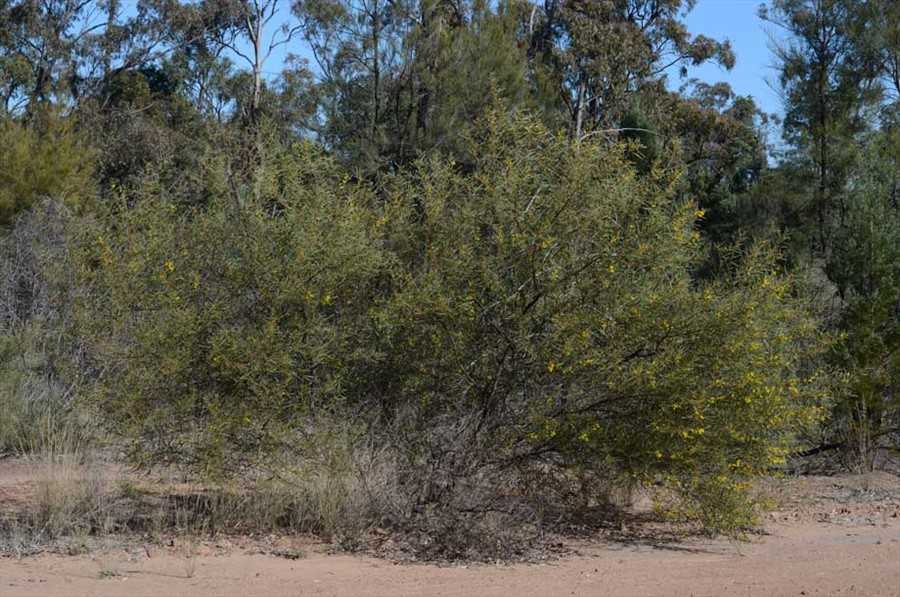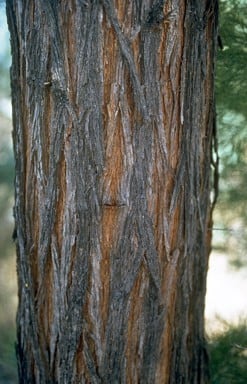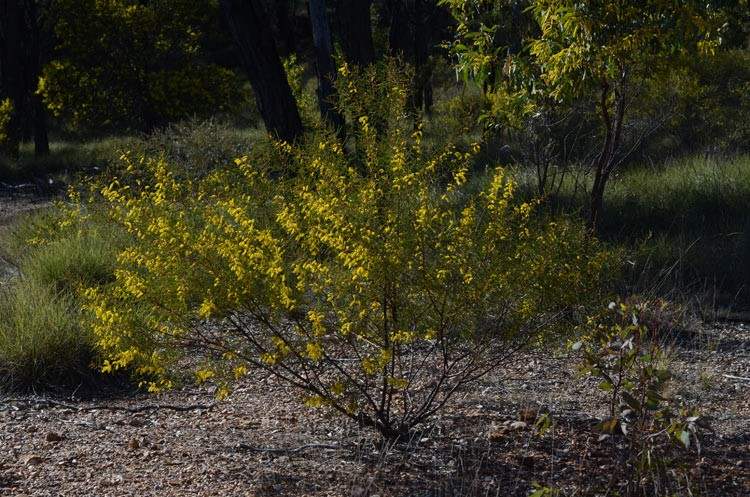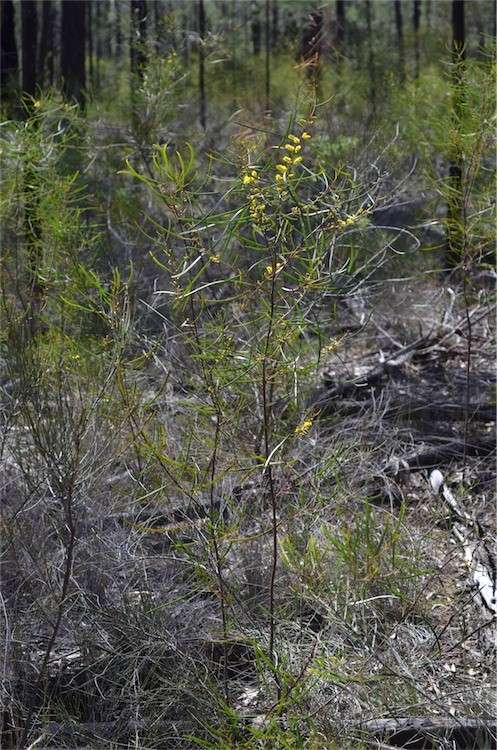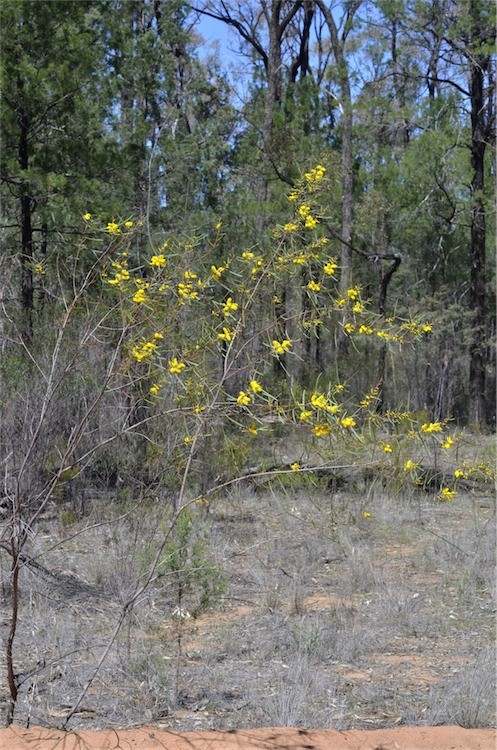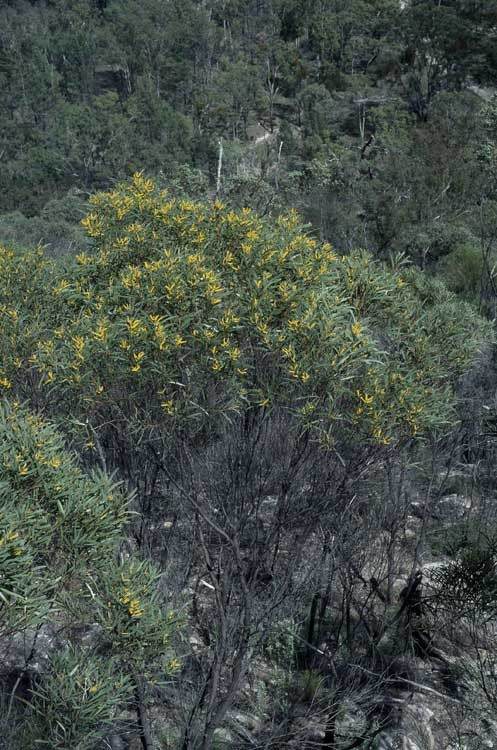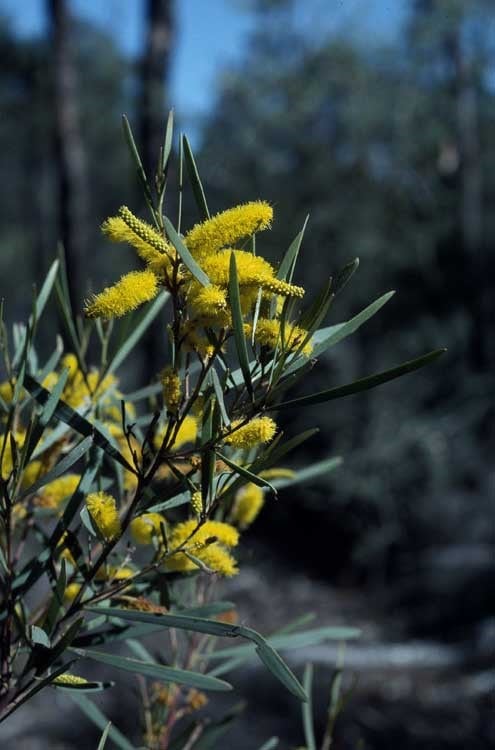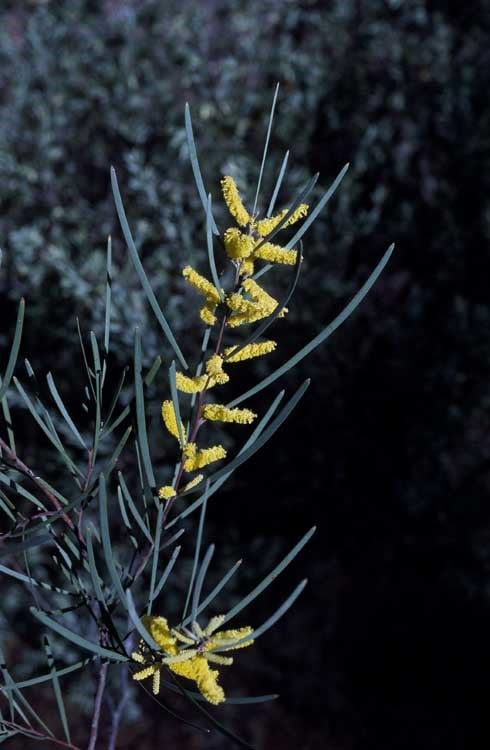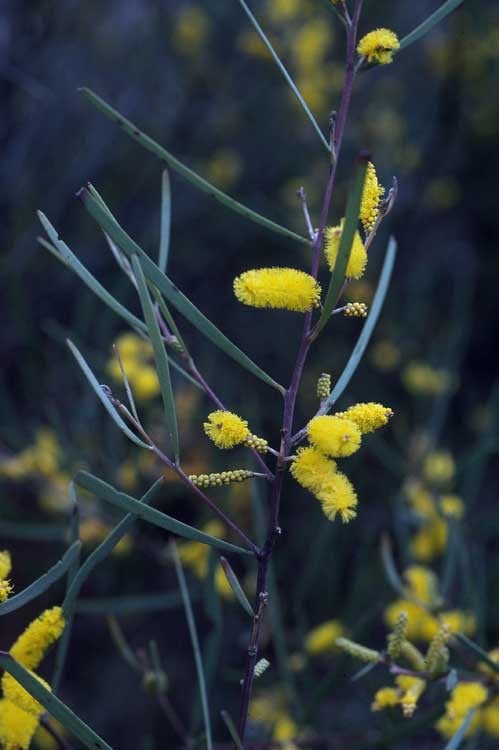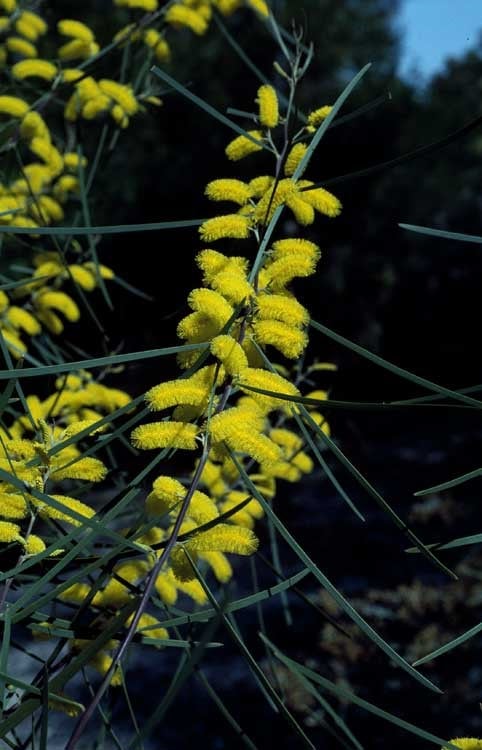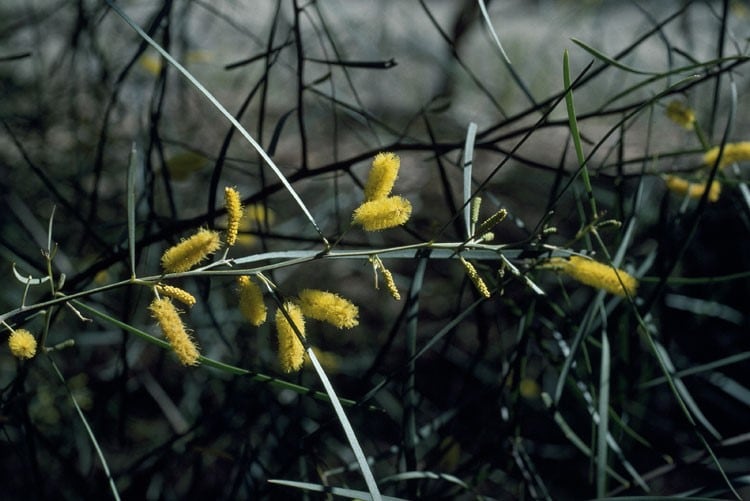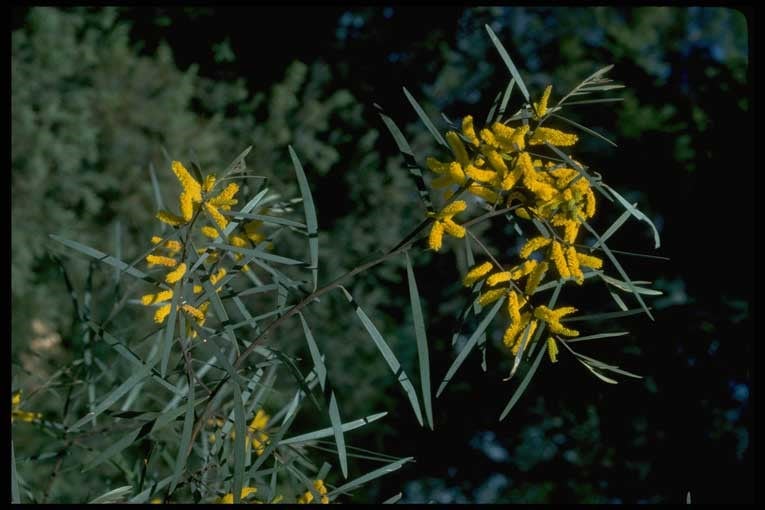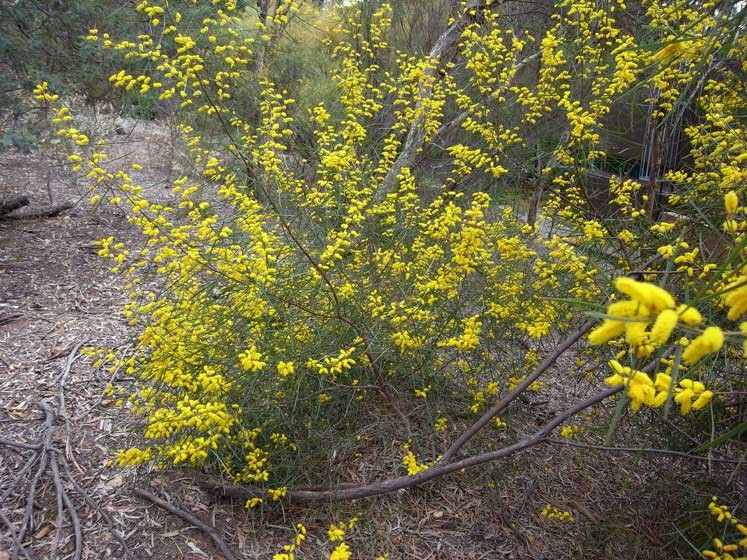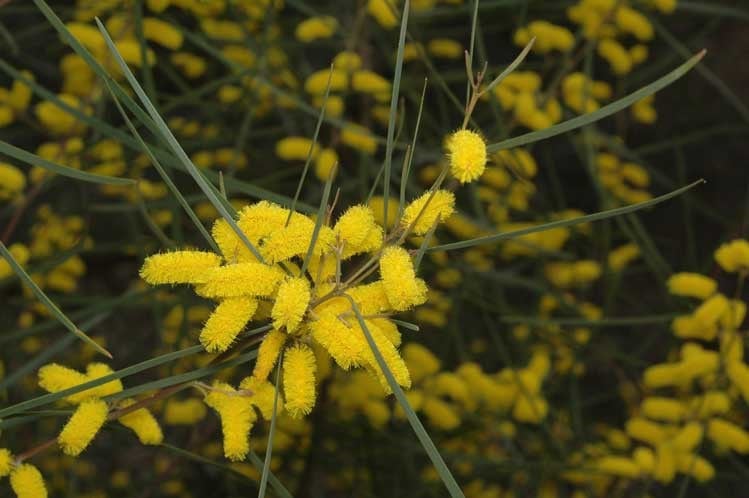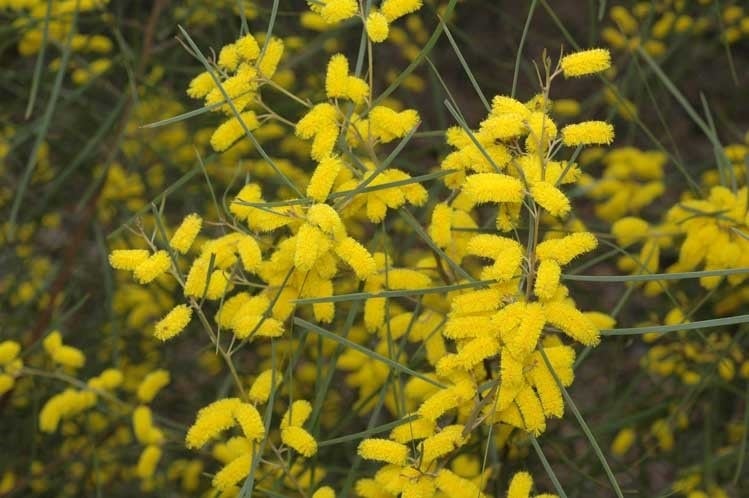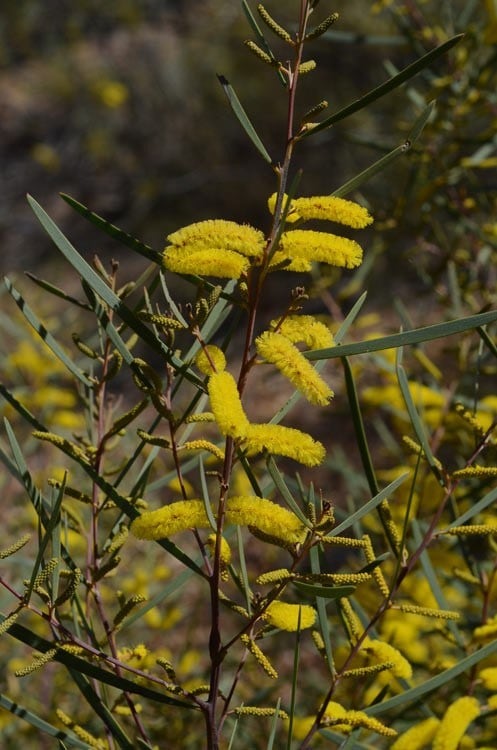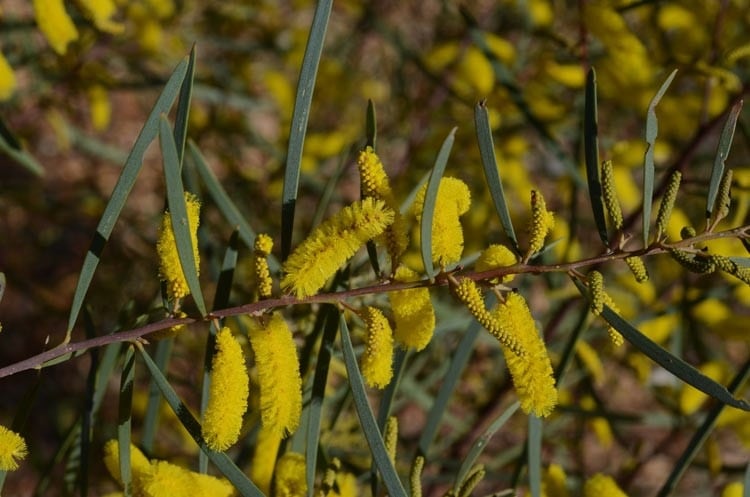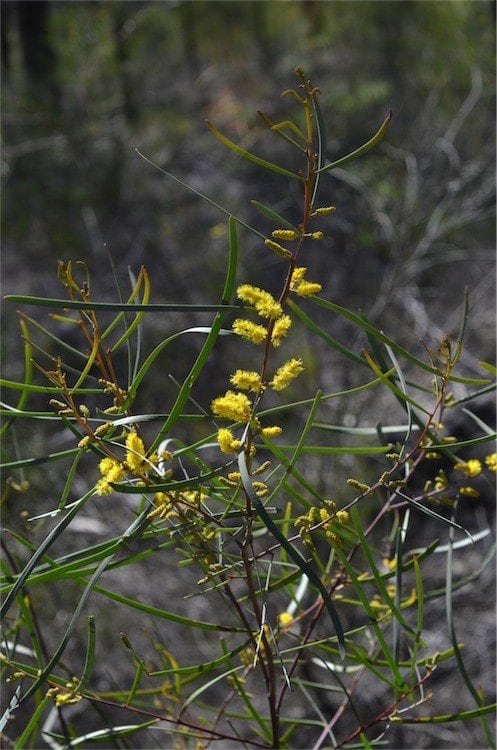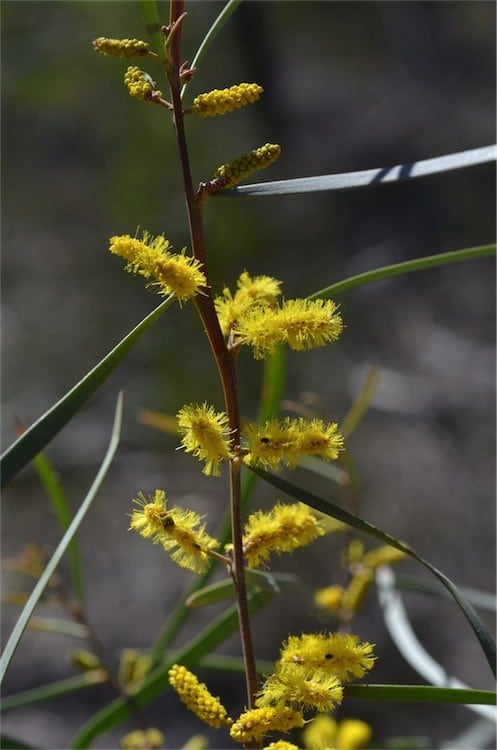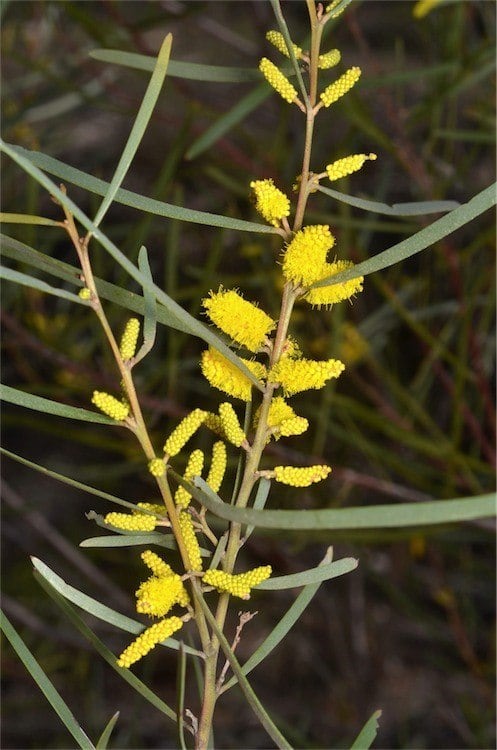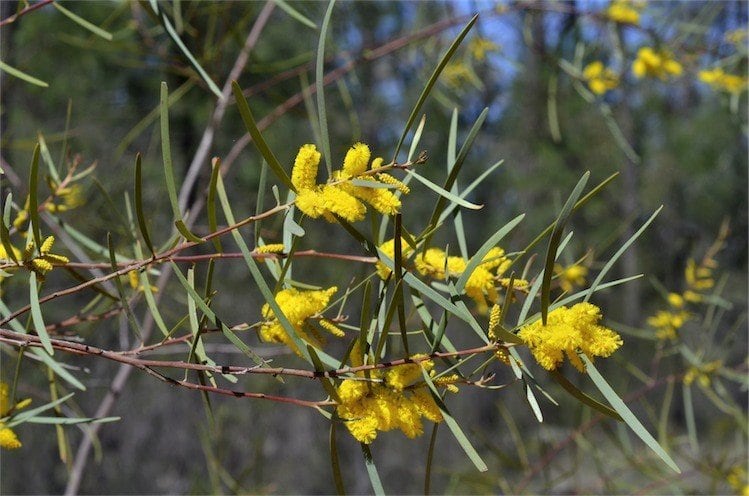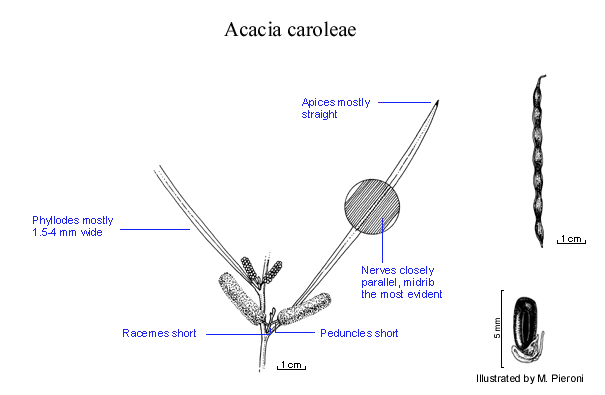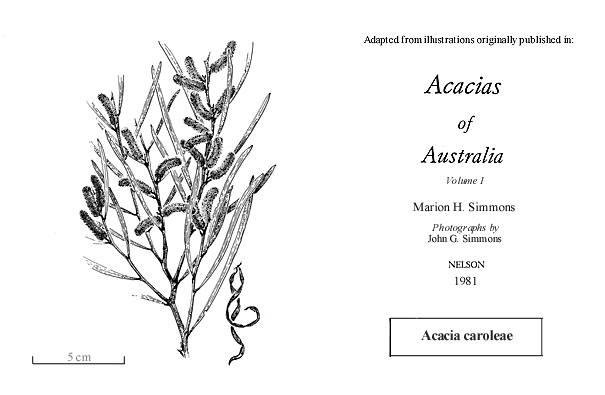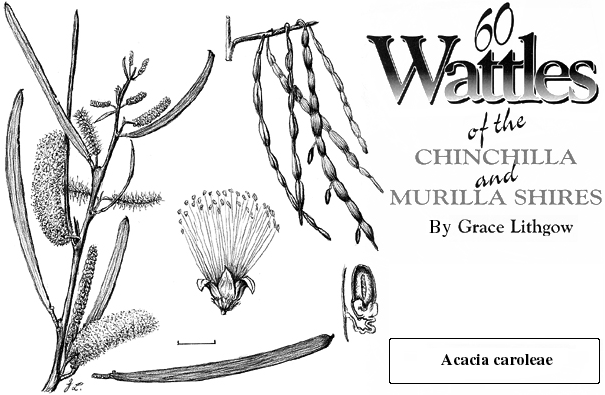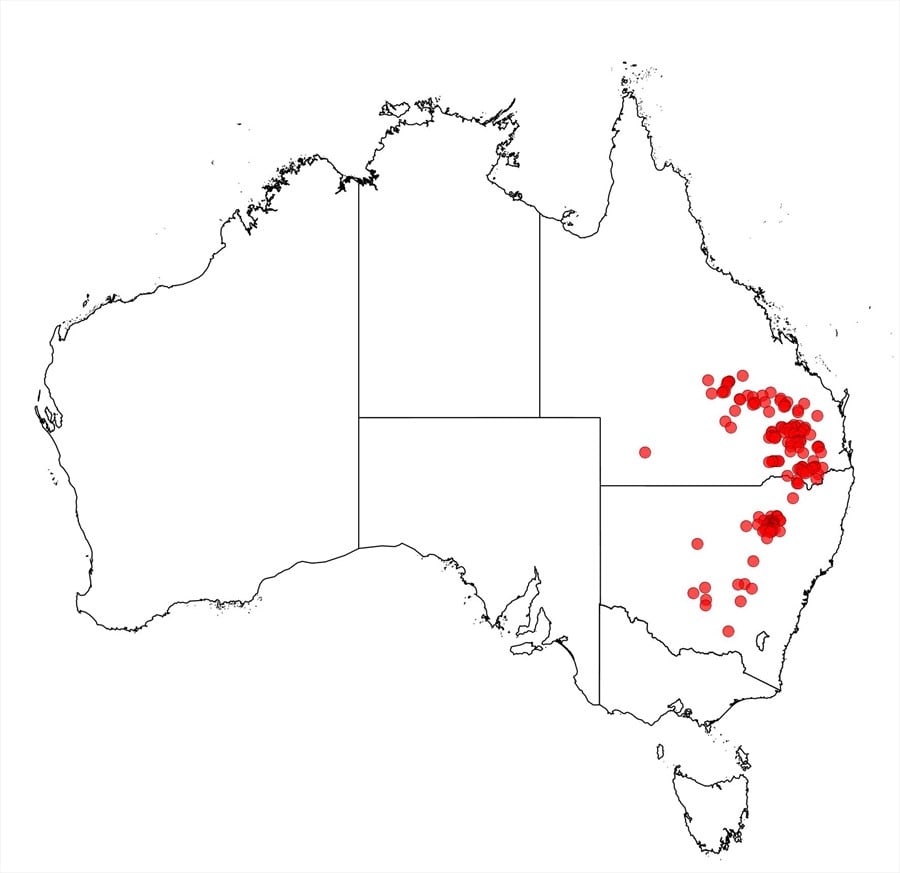Acacia caroleae Pedley
WATTLE
Acacias of Australia
Family
Fabaceae
Distribution
Widespread in inland south-eastern Qld and north-eastern N.S.W. between Moura and Gilgandra.
Description
Shrub or fastigiate tree to 7 m high, multistemmed. Bark corrugated, fissured, dark grey. Branchlets angular, pinkish to dull purplish red, sometimes mealy, glabrous, often resinous. Phyllodes linear, flat, ±straight to shallowly incurved, 5–14 (–21) cm long, 1.5–4 (–6.5) mm wide, coriaceous, scurfy, glabrous; minor nerves c. 8 per mm, inconspicuous, parallel, not anastomosing; midnerve ±evident; gland 1, rudimentary, basal, to 1.5 mm above pulvinus. Inflorescences short racemes 1–20 mm long. Spikes 1.2–2 (–2.8) cm long, golden. Flowers 5-merous; calyx 0.5–1.1 mm long, dissected to 1/4, sparsely hairy at base and apex; corolla 1.2–1.8 mm long, ±glabrous; ovary glabrous or with apical hairs. Pods linear, raised over seeds, 6–8 cm long, wrinkled, glabrous. Seeds longitudinal, oblong-elliptic, 4–4.5 mm long, dark brownish black; pleurogram slightly paler, open, without halo; areole brownish black.
Phenology
Flowers mainly Aug.–Oct.
Habitat
Grows in sandy, often alluvial soils, usually in open eucalypt forests and woodlands often dominated by Callitris, and frequently in disturbed areas.
Specimens
Qld: ‘Alice Wells’, on N boundary of Mt Playfair Stn, D.F.Blaxell 1466 & J.Armstrong (BRI, MEL, NSW); 14.2 km N of Tara, N.Hall H78/29 (NSW); 15 km ESE of Inglewood, A.N.Rodd 4113 (BRI, MEL, NSW). N.S.W.: 4.8 km along Forest Way Rd, S of Narrabri, N.Hall H 84/53 (NSW).
Notes
Closely allied to A. doratoxylon which usually, but not always, has broader (2–8 mm wide), more curved and brighter green phyllodes (the phyllodes often being slightly narrower, straighter and more bluish- or grey-green in A. caroleae), and often has longer flower spikes (to 35 mm long). Also related to A. granitica which has almost sessile spikes, and to A. burrowii which has broader phyllodes, mostly shorter calyces and longer corollas, but it lacks the broad juvenile phyllodes of the latter.
FOA Reference
Data derived from Flora of Australia Volumes 11A (2001), 11B (2001) and 12 (1998), products of ABRS, ©Commonwealth of Australia
Author
Dr M.D.Tindale and Dr P.G.Kodela with the assistance of M.Bedward, S.J.Davies, C.Herscovitch, D.A.Keith and/or D.A.Morrison
Minor edits by B.R.Maslin & J.Rogers
This identification key and fact sheets are available as a mobile application:
URL: https://apps.lucidcentral.org/wattle/
© Copyright 2018. All rights reserved.
